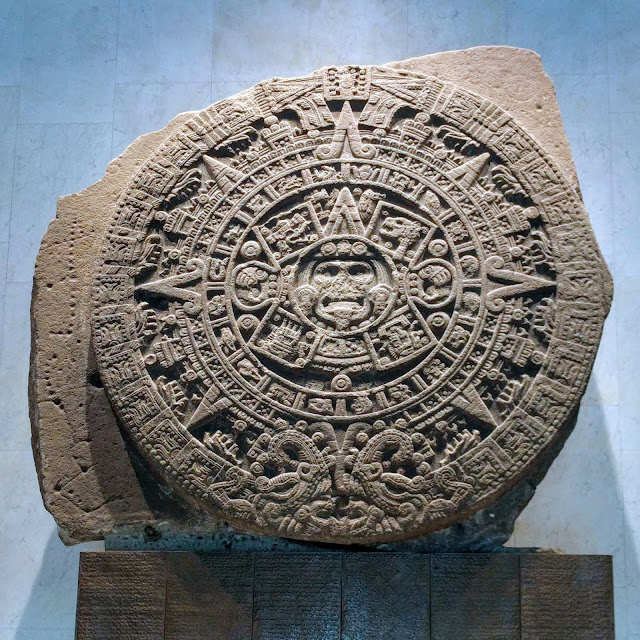Museo Mural Diego Rivera (Day 26 of 27)
Sunday Afternoon Dream at Central Alameda - Mural by Diego Rivera
Sueño de una Tarde Dominical en la Alameda Central
This mural is a faithful and provocative portrayal of Mexican society seen along the timeline of Mexico's history. Rivera comments on social-economical and political problems of Mexico, past and present through his painting. Diego Rivera obsessively completed this mural within 3 months, with a staff of three other painters. The mural is about 15 yards by 4 yards.
 |
Selected Close-up: A poor boy and thief (barefooted and wearing white) attempts to rob, dreaming of the food he can buy with the money.
To the right of the boy is an old woman (in black robe), dreaming of her affair with an American invader (in green), with whom she had a blond son.
To the left of the boy is an old napping man (in top hat and cane), reliving the past glorious era of Mexico (dancing with woman) under General Santa Anna.
General Santa Anna (in feathered cap and holding gold keys) is above the boy and above the extended arm of the dancing woman.
To the right of Santa Anna is American General Winfield Scott, head of the troops that occupied Mexico City, camping at the Alameda.
|
The Mexican-American War in the Mural
Prior to 1848, the area of Republic of Mexico was twice what it is today. The entire northern half of what was Mexico - currently known as Texas, California, New Mexico and Arizona - was lost to United States by the end of the Mexican-American War in 1848. In the mural, General Santa Ana holds gold keys that represent the territories lost. Santa Ana is portrayed with a bulbous red nose, because he was known to be a heavy drinker.
In the mural, Santa Anna faces the American General Winfield Scott, the head of the troops that occupied Mexico City for 2 years, from 1846 to 1848. During this time, American soldiers wore green uniforms. Look in the mural for the blond man below General Scott, but the American soldier's face is blocked by the face of a Mexican woman who is the soldier's lover.
 |
| Stone of the Sun, currently housed at the National Museum of Anthropology |
Also at this time, an enormous Aztec stone disc (that is as tall a house) was on display outside the Metropolitan Cathedral. The disc is famously known as "Stone of the Sun." It is said that American soldiers had fun by using it for practicing target shooting.
Interpretation of Mexico's history in Three Layers
The mural creatively tells Mexico's history in three layers:
- Bottom layer - persons representing segments of the Mexican population
- Middle layer - the person's dream or sueño
- Top layer - actual historical events.
MORE POSTS
NEXT POST (Day 27 of 27) REGALOS
PREVIOUS POST (Day 25 of 27) CADA DE TAPAS






Comments
Post a Comment